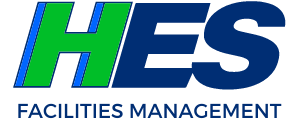No matter how many positives come out of an organizational change, it still can be stressful for the employees involved. Plan for the “human factor” throughout your transition process.
It’s human to resist change and hang onto predictability – especially at work, where we depend on familiar systems and processes to get our jobs done. Facilities management, of course, is no exception.
At HES, we help educational institutions transition from in-house to contracted facilities services every day. One of the most frequent questions new clients ask us is, “How will this affect our people?” It’s a question we love to hear, because it means we’re talking with leaders who share our commitment to employee morale and development.
Transitioning to a new facilities management provider can leave even the most devoted employees feeling vulnerable, unsure of how they’ll fit in as changes are implemented. To support them, make sure your new provider addresses the “human factor” in your new facilities management plan.
Managing change: A two-way street
A move to contracted services affects so many people, from your current facilities team to human resources, legal, procurement, students, staff, and faculty. Done right, an effective transition plan can:
- Improve employee morale
- Maintain productivity during transition
- Share accurate information and quiet the “rumor mill”
- Retain institutional knowledge
- Assess training needs and boost employee skill sets
- Reduce turnover and associated financial risk
Plus, it’s a two-way street; show support for existing team members, and they’ll respond more positively to the changes ahead.
Success starts with communication
We cannot stress enough that clear communication does wonders for a transitioning team. Here are some steps to building a great communication plan:
1. Collaborate with your facilities management provider.
We mentioned above that we help school administrators move to contracted facility services every day. This experience allows us to build out communication plans based on past successes. The magic really happens, however, with thoughtful input from your institution’s key stakeholders – specifically goals, concerns, and known challenges – to create a communication plan based in real-world experience, tailored to you.
2. Share early, share often.
Sharing the right information at the right time is a delicate balance. One approach that definitely does not work, however, is waiting too long to talk about organizational changes. That’s an easy mistake to make, but it can create issues that cost time and, potentially, money, including:
- Resistance or lack of buy-in
- Delayed onboarding and training
- Loss of valuable team members and their expertise
Unfortunately, employees will fill in the blanks on their own in the absence of clear, consistent information. Communicating early gives them time to adjust, mentally and emotionally, to changes in their workplace. You can help them on this journey of acceptance by deciding well in advance:
- What information-sharing will look like. Town hall meetings, small team Q&A, emails from leadership, intranet resources, or a combination of all of these? Personal messages from your organization’s leaders can be a powerful motivator.
- How often you’ll share. For instance, will there be daily briefings, weekly status reports, or both? Plan out the first year after your new contract takes effect.
- Who will receive each message. Frontline workers may not want or need the same information as HR, for example. While something like a change in benefits – such as a new health insurance provider – will be important to both groups, their questions will be very different.
3. Anticipate, address, assure.
Remember, as they adjust to the idea of a contracted facilities program, current employees will most certainly ask “What’s in it for me?” Their concerns may be as small as whether their parking spot will change, or as big as whether they’ll still be employed.
The best way to manage these concerns is by anticipating them in advance. Consider any change, no matter how small, that will directly affect your in-house team. This might include the look and feel of new uniforms, possible changes to titles and duties, new technology, different cleaning supplies, or even when they take their lunch breaks.
Share as much detail as you can about their new work environment. You may not be able to address every question your team has, but by preparing in advance, you’ll reduce the uncertainty they’re feeling. In fact, moving to an experienced facilities provider can bring tons of positive changes, including new benefits, more flexible hours, and greater opportunities for advancement.
Most of all, assure your existing employees that they’re valued team members, and that their contributions matter. And of course, choose an experienced facilities management partner that has the resources and skill to assess, onboard, and invest in employees who are eager to be part of a growing team.
Work with the right facilities management team
Want to know more about how the right facilities management partner can help your educational facility transition to contracted services? Contact us at info@hesfacilities.com.
Disclaimer
The illustrations, instructions, and principles contained in this website are general in scope and for marketing purposes. We assume no responsibility for: managing or controlling customer activities, implementing any recommended measures, or identifying all potential hazards.

